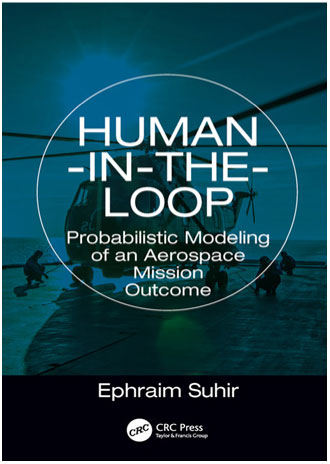
This book addresses the topic of modelling a successful manned aerospace mission. While the mention of ‘Human-in-the-Loop’ in the title might create an expectation that the author’s approach is simulation-based, this is not the case. Instead, analytic approaches are applied throughout, typically relying on a small number of theoretical probability distributions. While the value of analytic solutions is not in doubt, the appropriateness of the assumed distributions is seldom questioned, and little justification is offered by the author for his choices. This is a problem since analytic models and results are the mainstay of the book, yet there is no attempt to validate them.
In fact, the ‘Human’ in the title refers to one of the major reasons for aerospace mission failures. It is this aspect, usually left to the province of psychology, which the author attempts to model mathematically, sometimes by way of analogy with how hardware failures might be treated in a probabilistic risk analysis. This interesting analogy between physical and psychological constructs is one of the main features of the book. In outline, a pilot, for example, might be said to have some overall level of ability, referred to as human capacity factor (HCF), which can be likened to the strength of a material. Similarly, an aerospace mission places a certain level of mental workload (MWL) on the pilot. The MWL might become excessive when things go wrong and can be likened to the load or stress placed on a material.
The book is based on a set of the author’s journal papers, and it still reads like a set of separate papers rather than an integrated, coherent whole. The author does try to address this issue at the beginning, where Chapter 1 introduces the overall approach, and Chapter 2 offers primer material on applied probability. Unfortunately, there are several errors in the examples accompanying this chapter, which detracts from its usefulness and makes it unsuitable for teaching. Chapter 4, however, stands out like a sore thumb. It deals with electronics reliability, and although several topics are introduced that are later referred to, their future relevance is not made clear in the chapter itself.
This book contains a number of thought-provoking ideas, illustrated by interesting and practical applications in aviation safety. It also stakes a worthy claim for probabilistic modelling to be given a more central role in aerospace psychology. However, the ideas need further development before they can be considered of practical use. This, together with the hefty cost of the book, means that most interested readers would be better off consulting a select few of the journal papers on which the book is based.


